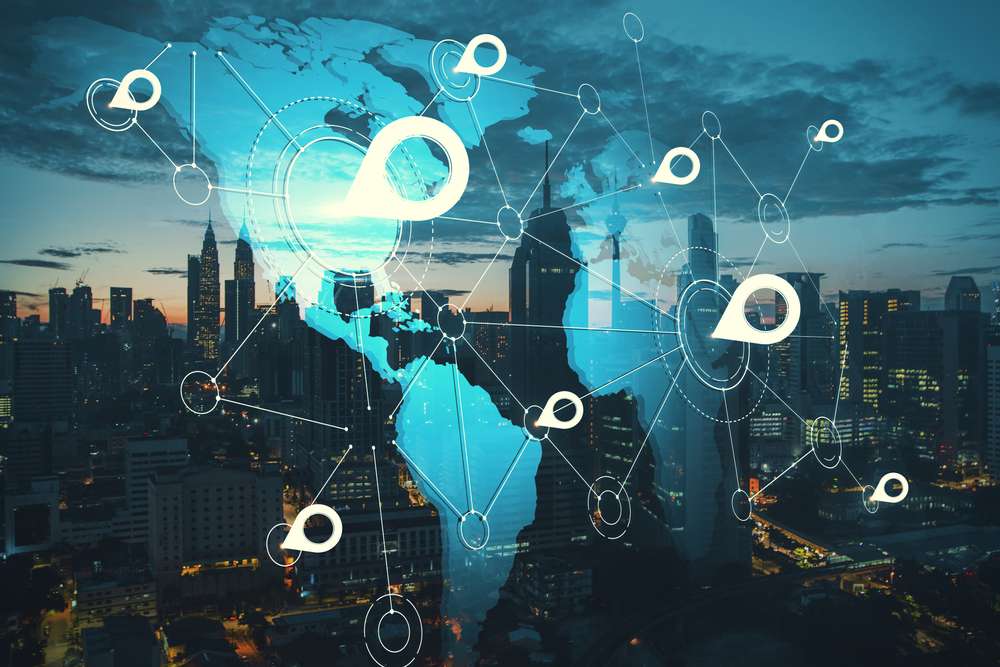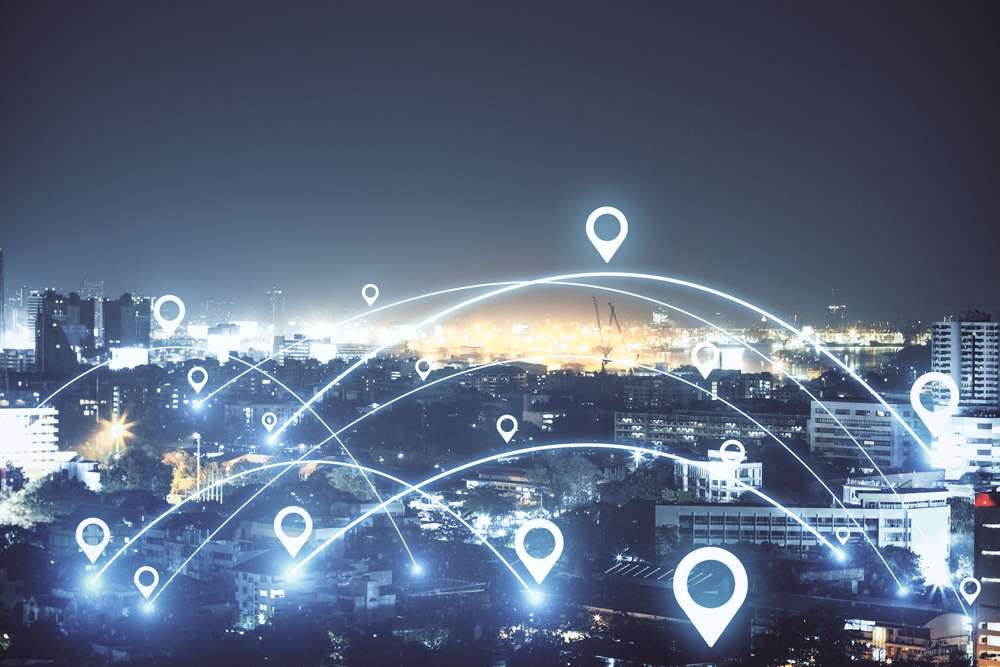
Introduction to Geolocation in eLearning
Geolocation has become increasingly relevant in the broad array of industries, transforming several aspects of our daily lives. With advancements in technology, eLearning designers and developers are beginning to realize the potential of geolocation—the use of technology to track the geographical location of a user—for enhancing teaching and learning experiences.
The concept of geolocation revolves around identifying the geographic location of an object or individual using data processed via the internet. Specific technologies, like GPS devices or RFID tags, help detect and record location data. This information can then be used to create a rather immersive and engaging learning experience that is tailored to a learner’s specific location.
For instance, consider a learner accesses an eLearning course on historic monuments while visiting a museum. Based on their geolocation, the course could provide specific information about the exhibits in that museum, enhancing their overall learning experience.
Geolocation in eLearning is not just about offering location-based content. It’s also about learning in context. That is, it allows eLearning developers to design courses that are geared towards providing information that is highly relevant to what a learner may be experiencing at a particular moment in a specific location. Consequently, the information becomes practical, real-world oriented, rather than being purely theoretical and abstract. The students can learn while doing, reinforcing knowledge acquisition and retention.
This type of eLearning development contains significant potential for organizations to offer personalised, context-specific training to their employees as well. For example, an international company could customize its training programs to fit the cultural business nuances of different branches operating in various locations. This renders the training more applicable and impactful for each of its employees around the globe.
In the world of eLearning development, geolocation represents an important step towards context-rich, personalized, and effective learning experiences. The possibilities for its application are only as limited as the imagination of the eLearning developer. With careful planning and innovative execution, geolocation can be decisively harnessed to create immersive and engaging eLearning experiences.
Embracing this technology allows eLearning development to move away from the one-size-fits-all approach and into an era of personalized, contextual, and adaptive learning paths. It paves the way to delivering learning experiences that are responsive not only to different learning styles and speeds but also to the diverse environments learners find themselves in.
Despite being fairly new and unexplored, geolocation presents immense scope and is an exciting frontier for eLearning professionals looking to innovate new learning experiences. By integrating geolocation-based technology, eLearning can become location-smart and thereby, more relevant and engaging. However, this innovative step towards transformative learning should be implemented thoughtfully, ensuring smooth transitions and high-quality learning experiences.

Understanding the Power of Geolocation
In the context of eLearning, geolocation represents a potent tool, unlocking a vast expanse of possibilities. Essentially, geolocation allows us to know the physical location of an internet-connected device using various data collection methods. By leveraging this tool in eLearning, it’s possible to create a more personalized, relevant, and interactive learning experience centered directly around the learner’s location.
Geolocation adds a dimension of spatial awareness to eLearning platforms. Through this digital lens, a device’s location can influence the content delivered to the user, making it highly contextual and relevant. As a result, eLearning can be transformed from a static, one-size-fits-all model to a dynamic, adaptive learning ecosystem that carefully considers the learner’s surroundings to build an engaging and compelling learning experience.
This dynamic adaptation’s power is that it adds a personal touch to eLearning. Instead of serving the same content to everyone, eLearning platforms can curate the curriculum based on learners’ geographical positions. For instance, a language-learning app could use geolocation to emphasize language and vocabulary relevant to the learner’s current location—not just their language of study.
Moreover, geolocation empowers eLearning platforms to deliver location-based assignments or real-world challenges, which can increase engagement and real-world application of learning. For example, historical or cultural education programs could provide location-specific content or tasks when a learner is visiting a particular site or city.
Geolocation can also facilitate collaborative learning based on location. Learners located in the same area could be connected through the platform to participate in group discussions, collaborative tasks, or meetups, thereby fostering a sense of community and encouraging peer learning.
While these advantages make the power of geolocation apparent, it is also essential to consider privacy concerns linked to using sensitive location data. eLearning developers must tread carefully and consider data privacy regulations applicable in different regions worldwide to create solutions that respect the user’s privacy and encourage trust in the platform.
In a nutshell, harnessing the power of geolocation can significantly enhance eLearning development, creating more personalized, engaging, and relevant learning experiences. However, the use of geolocation technologies must be thoughtfully and responsibly deployed to balance the benefits of personalized learning with the protection of users’ data privacy.

Role of Geolocation in eLearning Development
Geolocation technology is crucial in bringing context, interactivity, and a modern sense to eLearning modules. With its ability to provide the learner’s geographic location, it allows developers to customize content and experiences based on where the user is, ultimately enhancing the effectiveness of learning. Let’s delve deeper to better understand the role of Geolocation within eLearning development.
The primary use of geolocation in eLearning is the delivery of location-specific content. This means that the eLearning content could change depending on the learner’s location. For instance, a multinational company’s eLearning program might provide safety regulations that vary based on differing regional laws.
When learners engage with this tailored content, they are more likely to perceive the information as relevant and directly applicable to their situations. As a result, location-specific content can drive increased engagement, comprehension, and retention rates among global users.
Geolocation can also enrich virtual reality (VR) and augmented reality (AR) applications in eLearning. These innovative technologies can provide immersive, real-world experiences that greatly enhance learning. Location data can be used to trigger specific AR experiences or guide learners through VR environments, such as virtual tours of historical sites or training simulations.
Following a similar vein, geolocation enables the creation of real-world assignments or explorations. Institutions could task learners with visiting specific geographical locations, using their devices to interact with location-based eLearning content. This facilitates experiential learning, where learners can apply knowledge to real-world contexts, improving retention and understanding.
Moreover, geolocation technology can record where learning is taking place, which can provide significant data for analytics. These analytics can shed light on learner behavior patterns and preferences, enabling instructional designers to further refine and mold their eLearning programs based on where learning is found to be most effective.
Lastly, geolocation can help foster social learning. Local tips, perspectives, or messages can be pushed to learners in a certain area. Picture a scenario where a group of learners are visiting a museum for an assignment, and previous visitors have left tips, ideas, or information for future visitors. Such location-dependent sharing creates a richer, more collaborative learning experience.
To leverage geolocation effectively, however, privacy and security considerations must be in place. Users require the assurance that their location data is secure and used solely for their benefit.
To conclude, geolocation is a powerful tool in an eLearning developer’s toolkit. When thoughtfully integrated, it can boost personalization, context, engagement, and even collaboration in eLearning. However, as with all powerful tools, it should be used responsibly, with appropriate care taken over user’s privacy and data.

Strategies for Integrating Geolocation in eLearning
Incorporating geolocation into your eLearning program can seem daunting at first, but with a well-planned strategy, its integration can be smooth and its benefits substantial.
First and foremost, it’s vital to identify the specific needs and objectives of your eLearning course. In what ways can geolocation enhance your learners’ experience? Perhaps it can provide location-based assignments, promote collaborations among learners in the same area, or offer localized content and resources. Once these questions are answered, you can start planning the integration process.
There are different tools and platforms available that support geolocation features. While some eLearning platforms have these built-in, others might require third-party integrations. It’s essential to research and select a solution that best fits your requirements and budget.
Next, plan the geolocation-based activities and content within your eLearning course. This can range from simple location-specific reminders to more advanced geolocation-triggered learning scenarios. For instance, students studying history might receive interactive quizzes about a landmark when they are in its vicinity, enhancing their learning through the immediacy of their location.
Content localization is another area where geolocation can significantly contribute. Language, cultural norms, and laws vary from place to place and your eLearning content should reflect that. Geolocation can help ensure the right localized content is delivered to the right learners.
Collaboration among learners based on geolocation can also be encouraged. Through GPS enabled devices, learners in close proximity can be notified and brought together for assignments or study groups, promoting social learning.
Furthermore, it’s also crucial to design a user-friendly interface that makes it easy for learners to navigate the geolocation features. Clear instructions on how to use such features, and round-the-clock technical support can greatly aid in this regard.
Lastly, don’t forget to respect the privacy of your learners. You should obtain their consent before using their location data, and reassure them that their information is secure and is not used for any unintended purpose.
Remember, the idea behind integrating geolocation in eLearning is to enhance the learning experience, not to make it complicated. By aligning the geolocation strategy with the learning outcomes, one can incorporate this technology optimally for effective and engaging eLearning programs. The key is to start small, get feedback, and continually improve based on the learners’ experiences and needs.

Benefits and Challenges of Geolocation in eLearning Development
Geolocation in eLearning is not just a novel concept but a gamechanger that has the potential to transform the learning experience in a digital environment. The ability to provide tailored educational content based on a learner’s geographical location offers numerous advantages. However, along with these immense advantages, there are some challenges that need to be overcome to unlock its full potential.
One of the most apparent benefits of geolocation is personalization. For students, eLearning can often feel impersonal. However, harnessing the power of geolocation technology, learning materials can be personalized based on the learner’s locality. For instance, consider a course on cultural studies. The course could automatically adapt its content to focus on the culture most relevant to the student’s location. This relevance can increase engagement and retention of information.
Another benefit is the ability to facilitate real-world learning experiences. For instance, a botany student could use a geolocation-enabled app to identify and study plants in their specific geographical area. Similarly, history students could experience immersive, site-specific learning while visiting historical landmarks. Beyond this, geolocation can also allow for task-based learning, where tasks are activated based on a learner’s location.
Geolocation in eLearning also supports collaborative learning. It enables learners within the same region to connect, interact, and learn from each other. This localized community building can foster a supportive and engaging learning environment.
Despite these benefits, there are some challenges that come with integrating geolocation in eLearning. One of the most contentious issues is privacy. Tracking a student’s location raises privacy concerns that need to be tactfully handled. It is essential to ensure that the use of geolocation complies with all relevant laws and regulations, and that students feel secure in how their data is being used.
Moreover, there might be technical challenges such as device compatibility, internet speed, or availability of technological infrastructure, especially in remote locations. It could be that certain features or applications do not work as well on some devices, or that the location data is not accurately captured in certain areas.
Finally, there’s the potential issue of inclusivity. The content must be designed such that it can suit learners across different geographical locations. If the content is heavily skewed towards specific locations, it could marginalize the learners outside those areas, defeating the purpose of providing an inclusive eLearning platform.
In conclusion, the benefits of geolocation in eLearning are substantial, promising a more engaging, personalized, and enriched learning experience. However, to ensure it does not become intrusive or exclusive, the challenges surrounding privacy, technical capabilities, and inclusivity need to be addressed meticulously during eLearning development. The potential this technology offers in the field of eLearning is vast and, if harnessed effectively and responsibly, it could mark a significant stride forward in how we view and approach digital learning.

Exploring Case Studies of Successful Geolocation eLearning Programs
Geolocation eLearning systems have revolutionized how learners interact with content, often offering a tailored and immersive experience. This chapter delves into three case studies that successfully use geolocation in their eLearning programs, providing helpful takeaway lessons for those aspiring to leverage this technology.
The first case study concerns a global retail company that successfully used geolocation in its training program for employees. The company developed an eLearning module where each retail store’s location would trigger specific learning materials applicable to that specific location – detailed about inventory, local competition, customer demographics, etc. It significantly streamlined the training process, with employees appreciating the contextual relevance. The improved employee performance dramatically emphasized the significant role geolocation played.
The second case study features a tourism company that has devised an innovative eLearning program for its tour guides. Each guide could access their eLearning materials through a mobile application where geolocation was applied. When guides approached specific tourist spots, the app would automatically present relevant information about the site’s history, cultural significance, and interesting trivia, creating a richer, more engaging client experience. In this case, geolocation eLearning promoted both personal development and job-specific skills, demonstrating the broad potential of this technique.
The third case study involves an international non-profit organization that utilizes geolocation in its volunteer training programs. Volunteers work across a variety of diverse environments globally, and the organization adopted geolocation in their eLearning system to provide locale-specific training. Crucial information about local culture, language, and necessary skills triggered based on the volunteer’s destination. Such an approach prepared volunteers more effectively for the unique challenges they would face, leading to more successful and impactful assignments.
These case studies exhibit just a fraction of geolocation’s exponential possibilities for data-driven, contextual, and highly-personalized eLearning strategies. They demonstrate how location-specific content delivery can enrich learning experiences and improve learner outcomes, even in vastly different industries and disciplines.
For eLearning developers, the takeaway should be that geolocation can be a valuable addition to their arsenal of tools, providing adaptive, intuitive, and, most importantly, effective learning solutions. The key lies in figuring out how best to implement it in consideration of the learners’ specific needs and contexts, a challenge that will surely lead to even more innovative and successful eLearning programs in the future.

Preparing for the Future: Innovations and Trends in Geolocation eLearning
As eLearning developers, it’s essential to keep an eye on the exciting innovations and trends shaping the future. In particular, the role of geolocation in creating highly interactive, engaging, and dynamic learning experiences is rapidly evolving, so let’s delve into what lies ahead.
One significant innovation is the increased integration of Artificial Intelligence (AI) with geolocation. AI can significantly enhance the learning experience by combining location data with learner characteristics, providing personalized content and tasks based on a learner’s location and profile. Imagine a scenario where during a field trip, learners receive historical information custom-tailored to their academic level and interests when visiting a monument or heritage site. This immediate access to localized information can make learning more effective and engaging.
Another promising trend is the emergence of immersive learning experiences through Augmented Reality (AR) and Virtual Reality (VR). By leveraging geolocation, these technologies can provide learners with context-rich, practical learning scenarios. For instance, an AR application could overlay information about indigenous plants onto a real-time view of a forest during a biology field class. Similarly, VR can simulate environments for virtual field trips when physical visits are not feasible, providing a ‘real’ experience that regular classroom learning can’t compete with.
Additionally, the Internet of Things (IoT) is revolutionizing eLearning by introducing smart, connected devices that communicate seamlessly with each other. Combining IoT with geolocation can offer innovative ways of learning. For example, a learner studying environmental impact could use data sent from IoT weather sensors across different locations to understand climate change patterns.
The rise of mobile learning (mLearning) has also seen geolocation play a crucial role. With most learners having access to a smartphone or tablet, eLearning programs can leverage these devices’ GPS capabilities to provide location-based content. This opens up opportunities for context-specific learning, whereby content changes or adapts based on the learner’s location.
Moreover, gamification in eLearning is an area that will harness geolocation in exciting ways. Location-based games could encourage learners to move to a specific location to answer a question or complete a task, thus adding an interactive, engaging dimension.
However, with these innovations come challenges. Data privacy and security concerns need addressing as eLearning professionals deal with sensitive location and personal data. Compliance with data protection regulations like GDPR is a must. Additionally, the integration of new technologies could face resistance from traditional learners and educators. Therefore, ease of use, accessibility, and careful change management become crucial factors.
eLearning is increasingly becoming a dynamic, immersive, and highly personalized field, and geolocation will continue to be a pivotal player in this transformation. By staying conversant with these advancements and the associated challenges, we can harness the power of geolocation to provide future-focused, innovative eLearning experiences. Conclusively, geolocation is a powerful tool that, when tactfully employed, can substantially enhance learner engagement and enlightenment, bringing a more environmental and experiential perspective to digital education.